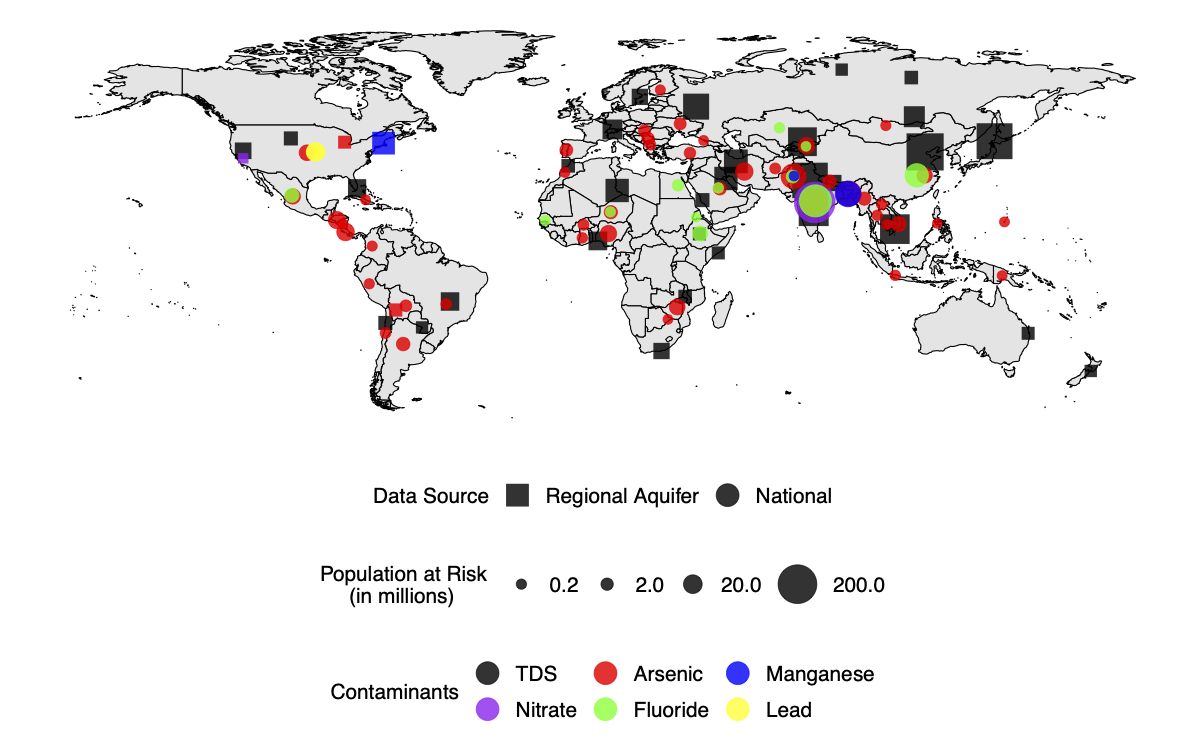DEFINE
Why Define?
Drinking water supplies are becoming increasingly polluted as a result of corroding infrastructure, agricultural and industrial waste, geogenic mineral dissolution, and extreme weather events. Chemical contaminants including dissolved metals, salts, and microplastics are linked to multiple adverse health impacts, which disproportionately impact vulnerable populations and marginalized communities. Through key informant interviews, data visualization, and field surveys, we can better DEFINE, contextualize, and address safe water challenges.
This research area is driven by questions such as:
-
-
-
-
-
Who is responsible for safe water provision in a particular setting and context?
-
What are the financial, managerial, and operational barriers to water treatment?
-
How can we effectively mitigate the disease burden associated with drinking water contamination?
-
-
-
-
Projects
-
Mapping lead contamination of water fountains in WA State primary schools and childcare facilities
-
Identifying knowledge and resource gaps to safe water access in rural and indigenous communities
-
Characterizing perceptions of drinking water quality, safety, and risk in public institutions
Output – Publications
2023

Estimating the Global Target Market for Passive Chlorination
Cherukumilli, K., Ray, I., Pickering, J. A. Environmental Science and Technology Letters
2020

Chemical Contamination of Drinking Water in Low Income Communities
Amrose, S., Cherukumilli, K., Wright, N. Annual Review of Environment and Resources
